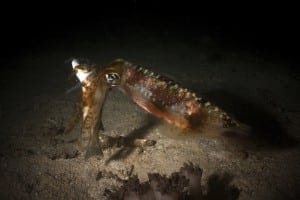
Imagine being at an all-you-can-eat buffet, where the selection is as varied as the ocean itself. Squids have a similar approach when it comes to dining. Their diet mainly consists of fish, crustaceans, and even smaller squid. In this article, we’ll dive deep into the squid’s feeding habits, explore what they eat, how they catch their prey, and what that says about their role in the ocean’s ecosystem.
What Do Squid Eat?
Squid are opportunistic feeders, which means they eat whatever’s available. Their diet primarily consists of:
- Fish: Squid are known to devour small fish, using their speed and agility to catch them.
- Crustaceans: Shrimp and crabs are also on the menu, especially for larger squid species.
- Other Squid: Sometimes, squid will even hunt their own kind, leading to a bit of underwater sibling rivalry!
These creatures are equipped with a beak-like jaw that helps them tear apart their meals. Honestly, it’s quite impressive how versatile their diet is! Depending on their size and species, a squid’s menu can change. Smaller squid tend to stick to tiny fish and crustaceans, while larger species are capable of hunting larger prey.
How Do Squid Catch Their Food?
Squid are masters of the hunt, employing a few clever techniques to catch their meals. One of the most fascinating aspects of their hunting style is their speed. They can move swiftly through the water by expelling water from their bodies. This bursts of speed often catch prey off guard.
Another unique feature is their tentacles. Squids have up to ten arms, which they use for grabbing and holding onto their prey. The two longer arms, often called feeding tentacles, are especially important. They can stretch out to snatch fish or crustaceans with remarkable precision. You might be wondering how they do this so effectively. The secret lies in their ability to sense movement and vibrations in the water, thanks to specialized cells in their skin.
Lastly, some squid species are known to use ink to create a smokescreen when they feel threatened or need to escape from predators. This defense mechanism can also be handy when hunting, as it momentarily confuses their prey, allowing squid to strike.
Feeding Strategies of Squid
Did you know that squid have different feeding strategies based on their environment? Here are a few:
- Ambush Predation: Some squid prefer to lie in wait, hiding among rocks or coral until their prey comes close. With a quick, sudden movement, they launch forward to grab their meal.
- Active Hunting: Others are more like the predators of the sea. They actively swim around, searching for food, using their speed and agility to surprise their prey.
- Group Hunting: In certain situations, squid will hunt in groups, working together to corner schools of fish or other prey.
Each strategy has its own advantages and helps squid adapt to various feeding situations within their habitats, whether they’re in shallow waters or deep seas.
Role of Squid in the Ecosystem
Squid play a crucial role in marine ecosystems. As both predators and prey, they help maintain the balance in their environment. By feeding on smaller fish and crustaceans, they help control these populations, preventing any one species from dominating the ecosystem.
At the same time, squid are a significant food source for larger marine animals such as whales, sharks, and seabirds. You might say they’re like the middle child in the ocean food chain—essential for keeping everything balanced!
Furthermore, their rapid reproduction rates mean that even when predator populations fluctuate, squid can quickly replenish their numbers. This resilience is key to their survival and overall health of ocean ecosystems.
How Feeding Habits Change with Seasons
Like many animals, squid adjust their feeding habits based on seasonal changes. For instance, during warmer months, they might have access to a wider variety of prey as other marine species move into their habitats.
In colder months, food can be scarcer, prompting squid to adjust their hunting strategies. They might become more opportunistic, taking whatever they can find to survive. This adaptability is vital for their survival in the ever-changing ocean conditions.
Interestingly, scientists have observed different squid species exhibiting seasonal changes in size and behavior based on the availability of food. Those that can adapt quickly tend to thrive, while others may struggle.
Human Impact on Squid Diets
As humans, our activities can greatly affect the diets of squid. Overfishing, pollution, and climate change are just a few factors that impact their food sources. For example, when fish populations decline due to overfishing, squid might find it harder to hunt. This can lead to a ripple effect throughout the marine ecosystem.
Additionally, pollution can harm the habitats where squid find their food. Contaminants can make their prey less abundant or even toxic, impacting the health of squid populations. It’s a reminder of how connected we all are in this vast oceanic web of life.
Understanding the diet and feeding habits of squid offers a fascinating glimpse into their lives and the role they play in the ocean. From their diverse diet, effective hunting strategies, to their crucial position in marine ecosystems, squids are much more than just quirky sea creatures. They’re vital players in maintaining the balance of marine life.
By learning more about these remarkable animals, we can better appreciate the health of our oceans and the importance of protecting these unique ecosystems. Next time you see squid on a menu or in an aquarium, you might just think of their intriguing feeding habits and the vital role they play in our world.
